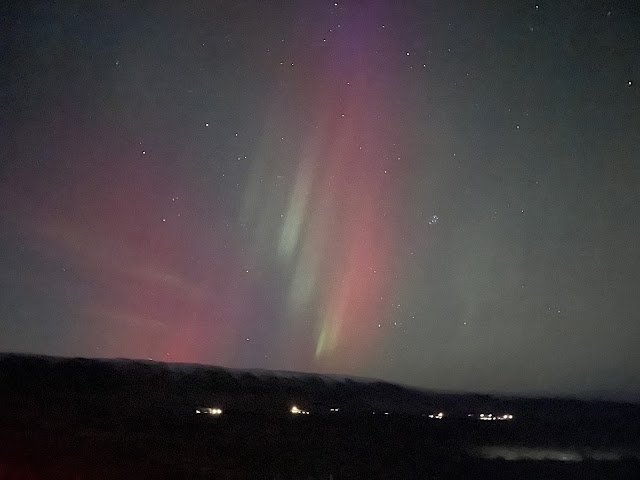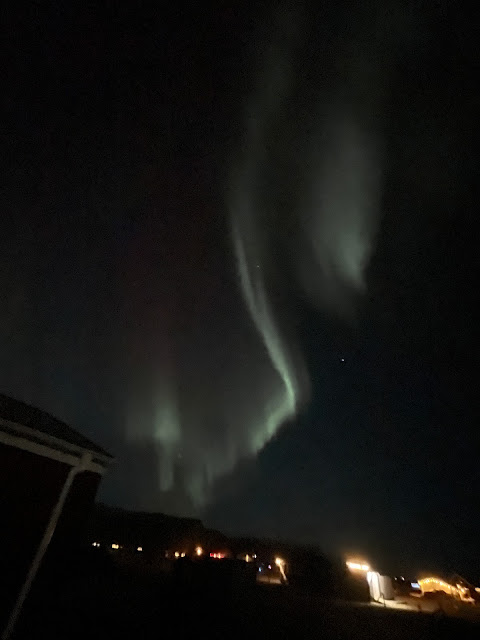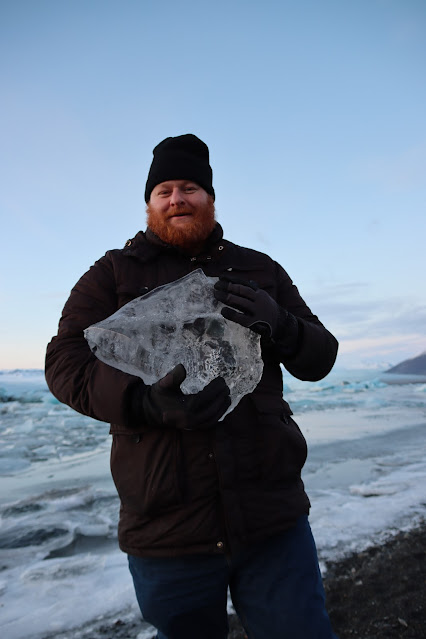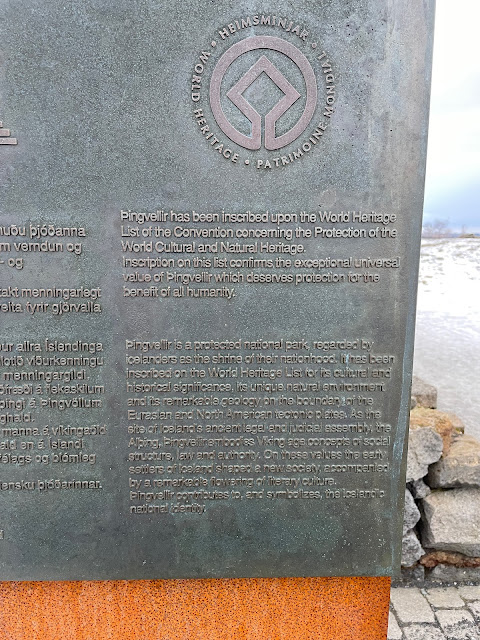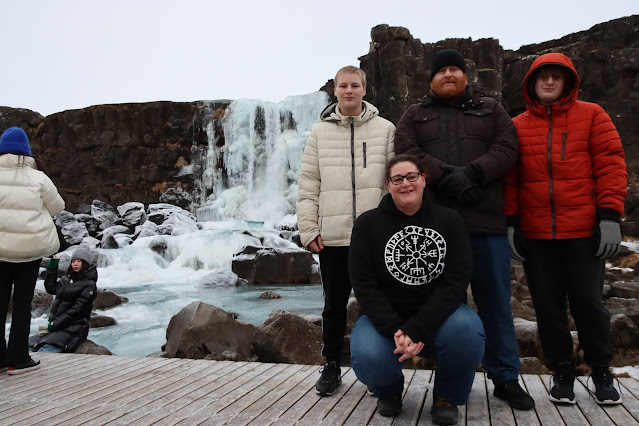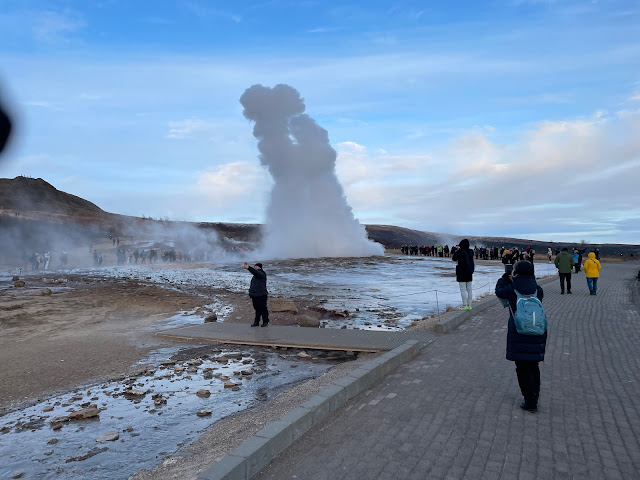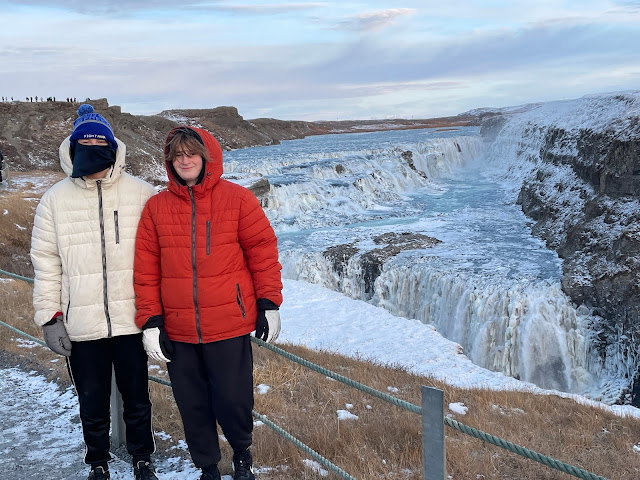As winter approached, so did the chance of seeing the Northern Lights. This year had exceptionally high KP (Planetary Index - from the German Planetarische Kennziffer) which is a number between 0 and 9 that represents the amount of geomagnetic activity in the atmosphere or, more simply put, the chance of seeing the Northern Lights. We'd previously seen them on our last trip to Sweden, when we travelled to Tromsø in Norway, but the Lights are always a little hit and miss - the KP index can change quickly and cloud cover can block them out. Last trip we had also visited the Iceland and the top of Finland trying to see the lights, as well as Kiruna last December, but other than one time in Tromsø they had proven elusive.
Essentially there are a few factors in getting the best chance to see the Lights, how clear the sky is, how little light pollution there is and how high the KP index is. You can improve your chances by heading further north, as the further north you are the lower the KP index needs to be for you to see the lights. So essentially head north, move away from major cities and hope for a high KP index and clear skies. (having less visible moon also helps as the full moon can block out some of the viewings.
So, why all this talk of Northern Lights on a blog post titled "Iceland"? We decided we had to take advantage of the high KP ratings and try to see the Lights. There was a slight chance from Malmö, but we were fairly far south and in the main part of town so it was unlikely. So, we started looking at places we could travel for a short trip. This close to Christmas Rovaniemi and Kiruna were either fully booked or super expensive as were a lot of the resort areas in northern Sweden. But then we found cheap tickets to Iceland with a newer airline - Play Air. As always they didnt include baggage but for a short trip this wouldn't be an issue. We had always wanted to travel back to Iceland after visiting on our previous trip to Sweden, so it would be a good chance to kill two birds with one stone.
But life can never be perfectly simple, Iceland was on volcano watch with the risk of a volcanic eruption in Grindavik, about 25km south of the main airport in Keflavik. While this wasn't a huge risk, there was a chance it could shut down flights or erupt while we were there. At the time of writing there are still about 100 localised earthquakes in the area each day and still the risk of a localised eruption. While the eruption of Eyjafjallajökull in 2010 caused several moths of flight delays, this was because of the glacier atop the mountain. Grindavik was more likely to be a smaller eruption.
All travel advisories were clear for Iceland (as long as we stayed out of Grindavik), so we bit the bullet and booked our flights. Unfortunately, the Blue Lagoon was only 8km from Grindavik so it was closed for the duration of our trip.
We flew out at 11am on Friday after catching the train to the airport. Kristine had sewn together some travel bags that were the perfect size for under-seat luggage, carrying our 3 days of clothes. The lady at the airline gate had no issues with the bags, but did complain because Kristine also had a small waterproof bag (smaller than half a sheet of paper) with the passports in it, thus exceeding her one bag limit. But since it was just passports we were allowed through without having to pay $7.5billion for the excess luggage.
The flight was about 3 hours and uneventful. I had a window seat, which let me get some shots as we came in to land at Keflavik. They really show how barren and rock Iceland is.
 |
| Þotuhreiður (The Jet Egg) |
 |
| Regnbogi (Rainbow) |
After picking up our car, we drove the 45min to Reykjavik, the capital city. Our accommodation was another 40min away, but we had a mission to complete before we could check in.
One of our friends had a name on a monument to the game 'Eve' (Monument Website). It lists the names of all registered players in March 2014.
The monument was near the shore front, so we parked at a grocery store and walked past a coastguard museum to find it. The monument was easy to locate, but the boys looked it over and were a bit disappointed. "There's no names on it."
Then we looked down. Each of the 370 tiles that made the base of the monument had tiny writing with all of the names.
It took some searching, but we found the name we were looking for:
After taking some pictures we headed back to buy some groceries and drove out to our accommodation in Kjósahreppur.
It was a summer house on a farm and perfect for our stay, far enough away from main towns to give a better chance to see the Northern Lights and well equipped with a kitchen, washing machine and hot tub.
We unpacked and then went outside to watch for the Lights. The sky was clear and the KP index looked good, but for the first few hours we didn't see much. It got pretty cold, so we would spend some time inside and then head out to check. Eventually we started to see some greyish streaks in the sky that looked a little like clouds. To the naked eye they were greyish white, but when we took photos it was clear that there was green in them.
After a while, the streaks spread overhead like a halo and then began to get flashes of green that were visible with the naked eye. I've heard of the lights being bright enough to light up the area, but for us they started as just grayish streaks but then filled out with some more solid green. In the photos we also picked up some of the reds as well.
The whole show lasted about half an hour and then the sky was clear again.
 |
| This is what it intially looked like to the naked eye |
The next morning we had an early start and a long drive out to the black sand beach, Reynisfjara.
One big issue we found with Iceland was that the volcanic rock did not reflect any light, making driving in the dark quite interesting:
 |
| But the sunrise was pretty awesome |
 |
| The other issue was the moisture that built up after we defrosted the windows - but this was only an issue on day 1 |
 |
| Frozen waterfalls |
The drive to Reynisfjara was about 2 and a half hours, so we were glad to get out and stretch our legs, but not so glad for the long line for the toilets as all the tour buses arrived.
Reynisfjara is just outside the town of Vik and is famous for its black sands, sea stacks and the basalt pillars. The sand is black as it is formed from volcanic rock.
Our next stop was Jökulsárlón, another two hours further east. Jökulsárlón is also known as the Glacier Lagoon. In the lagoon, the ice melting from the glacier flows down into the Atlantic Ocean.
The drive home was about 4.5 hours, in the dark. It dragged and we were all exhausted by the time we got back at about 9pm.
After a quick dinner we had a few checks for the Northern Lights and then got some sleep.
Day 3 started a little slower, as we only had a 20min drive to our first stop and it wasn't going to get light until around 10am. The goal this day was part of the main tourist drive, the Golden Circle. The weather was much colder due to windchill and we all rugged up well to head out.
First stop was Þingvellir, a major national park. (the Þ symbol is pronounced as 'th') It was home of the first Alþingi, or parliament - in fact the longest running parliament in the world that is still running.
When Iceland was founded it was home to several clans who were all ruled by separate leaders. With Iceland being the harsh country that it is, it was decided that a assembly was required to allow all of the leaders to meet and decide on laws or rule on punishments. Starting in 930, Þingvellir was chosen as the site and the Lögberg (Law Rock) was established - a rocky outcropping where the Lorespeaker could preside.
In the year 1000 the Icelandic people were under threat of invasion from Norway and met to determine whether they would adopt Christianity over Paganism in order to prevent the invasion. The Althing ended up ruling to adopt Christianity, rather than risk attack from King Olaf Tryggvason of Norway.
The parliament ran until 1262, when Iceland was taken over by Norway and submitted to the Norwegian King. By the late 1300s Iceland was under the control of Denmark and subject to absolute monarchy, meaning that the Althing became a law court instead of a true parliament.
In 1800 the Althing was officially disbanded and a new high court served the function, located in Reykjavik. A new Althing was established in 1843 and first met in Reykjavik in 1845 where it continues.
Þingvellir also has another interesting feature, it is home to the fissure between the North American and Eurasian plates. It is possible to walk between then in Almannagjá Gorge, or dive between them in Silfra, as Kristine did on our last visit.
Once we had found a park in the exceptionally icy car park, we made our way to the Almannagjá Gorge.
 |
| The Gorge |
 |
| Walking down into the Gorge |
 |
| Looking out over Þingvellir |
Our final stop in Þingvellir was the Öxaráfoss waterfall. This was easier said that done, because the way to the waterfall was covered in ice and often the rocks were very slippery. Both boys had a fall and I narrowly avoid it, by holding the guide rope on the climb. It was a slow process and coming down was much worse.
Once we managed to safely get back, we headed to our next stop - Geysir, a geyser field not far from the Gorge.
Geysir is famous as the first Geysir that was described in printed works and the first known to modern Europeans. The geysers are located in Haukadalur Valley and there are several, Strokkur (which was drilled to ensure that it erupts regularly), Geysir (which erupts very rarely, but can be over 70m high) as well as the smaller Litli Geysir.
After Geysir, we headed to our final stop, Gullfoss waterfall. There were several other waterfalls we had been keen to see but it was starting to get dark and we were tired and cold, so we made Gullfoss our last stop.
The Gullfoss waterfall is impressive, three tiered waterfall that then falls in two stages, 11m and then 21m. The average flow is 141 cubic meters per second in summer and 80 in winter. When we arrived it was mostly frozen but still had an impressive fall:
 |
| The boys at the top looking out over the plains |
After Gullfoss we headed back home and had a quiet night - Kris and I had a relax in the hot tub and the boys played video games.
The next day we were up early to catch our flight back to Copenhagen and then the train to Malmö.
Overall it was a short trip, but we crammed a lot in and Iceland was amazing.














